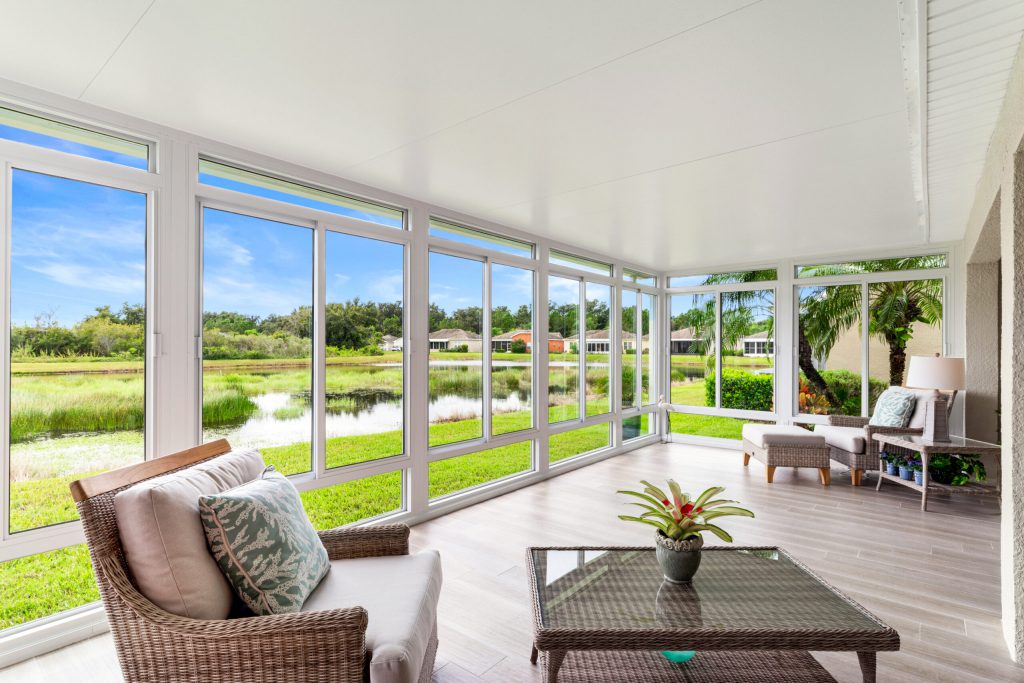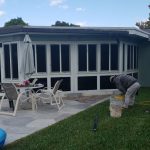Window Glass Types
Your probably considering new windows for your home if you're reading this. Buying windows is a big task and hard to know what questions to ask. You need to find an installing window contractor, that you can trust. The manufacturer of the windows you will by and all of the available options is equally important. This blog will discuss the many different types of glass that is in modern windows. It’s not a topic of much discussion, but it is important. Windows are expensive and you can’t change your mind after they are installed. The cost for glass upgrades is as a percentage of the overall cost small. So bear with me here and at least glance through the information below. It will be well worth your time.
Float Glass
Molten glass is is poured and floated on molten tin and lead plates. Cooling of the molten is rapid. To form large plates of glass with uniform thickness and a highly polished surface. The polished surface is achieves due to the surface tension of the liquide molten glass resting calmly on the metal plates.
The inexpensive sheets of glass are clear. They have no color. Pieces are cut to fit in to new doors and windows. Several sheets can be cut from each sheet. Some pieces will be further refined for upgrade options for strength and appearance.
Annealed Glass
Annealed glass is a refining process to improve the strength of float glass. The improvement come by slowing down the pace of curing. This reduces the internal stress created within the glass panels made as float glass. The new glass is allowed to heat-soak untill it reaches the desired internal relaxation.
Annealed glass is stronger than float glass. But neither annealed or float glass is good for making windows. It breaks into large pieces of sharp glass that can cause serious harm.
Tempered Glass
Tempered glass is annealed glass baked at 550 degrees for an extended period of time. The heat generates compresive strength on the surface. Interior tension is generated at the same time during this process. Glass treated this way is three times as strong. It has the added benefit of breaking into small round pieces.
Tempered glass is used in safety applications like automobiles, windows, refrigerator trays and cookware. Small round pieces of glass are less likely to injure than large sharp pieces. The choice is obvious when safety is a consideration.
Wired Glass
One might think a wire mesh within a pane of glass would make it stronger. Well, it does not. In fact, it makes it weaker. Wire mesh is embedded in glass panes because it increases it heat resistance. Wires glass is less likely to fall out of a window frame in the presence of severe heat.
The use of wire mesh in glass is on decline. Newer laminated products can perform equally as well in high heat applications. The newer products are stronger and less likely to shatter.
Tinted Glass
As you might guess, tinted glass is made by adding color to clear glass. This can be done in the form of adding pigment. Or, tint can be accomplished with a plastic film laminated on the outside. Car windows are commonly tinted in the fashion. Tint is added for privacy and architectural reasons.
Reducing the heat load inside is a main reason to tint windows. It can also reduce ultraviolet penetration. For years this was the only option, besides curtains, “stave off” the heat of the sun. It works quite well. Its does however heat the glass up a bit and we now have better methods to keep us cooler behind glass. Read on in the section Low E below.
Mirrored Glass
Mirrored glass receives a coating or laminate containing metal flakes. Te flakes line up and reflect light. There are many application for reflective glass. Mostly in commercial applications. You have seen many office buildings on which glass reflects like a mirror. The one downside is that they reflect in the direction with the most light. So at night, if you have a light on inside, you can’t see outside but outside can see in. Not a good thing at your home.
Obscured Glass
Obscured glass, also called privacy glass, is used in bathroom windows, shower doors and sometimes front doors. It allows light in. From the outside looking in things are fuzzy. You can’t see things clearly. Some obscure glass works better than others. Check the difference out before you buy.
Low-E
Low-e glass is a technical improvement on improving the thermal resistance in glass. The “e” stands for emissivity. What the heck is that right? Emissivity is the measurement of how well material radiates heat. Low-e windows emitted more heat back outside of the window pane. They are more effective than tinted glass and reflecting the heat back out to the source than other glass such as tinted glass. The measurement will be between zero and one. The closer to zero the better its performance.
Why not order a window with low-e and tints? Wouldn't that be better. No, it would not. The tint would heat up the glass and defeat the purpose for using low-e.
Laminated Glass
I’ve saved the best for last. Laminating is the process of glueing multiple layers of materials together. Plywood is many layer of thin pieces of wood glued together. The finished product is stronger and more durable than a single piece of the same size of wood. It’s the same with glass. Two or more pieces of glass are glued together with a plastic sheet between them. Two benefits are achieved. The product is stronger than a single piece of glass the same thickness. And the glass does not fall into multiple pieces if shattered. This greatly reduces the chance of a bodily injury in the event of an impact. There are no pieces of glass laying down for someone to cut themselves with.
Insulated Laminated Glass
Heat has a problem traversing boundaries in materials it passes through. The more boundaries, the greater resistance or R-value. Insulated laminated glass is two pieces of laminated glass and a gap between them. The gap is sometimes filled with argon gas which is more dense than our natural atmosphere. It’s more resistive to heat flow than the air we breath. Windows made with this type of glass are highly energy efficient. Add a low-e coating and vinyl frames and you have one heck of an energy efficient window.








